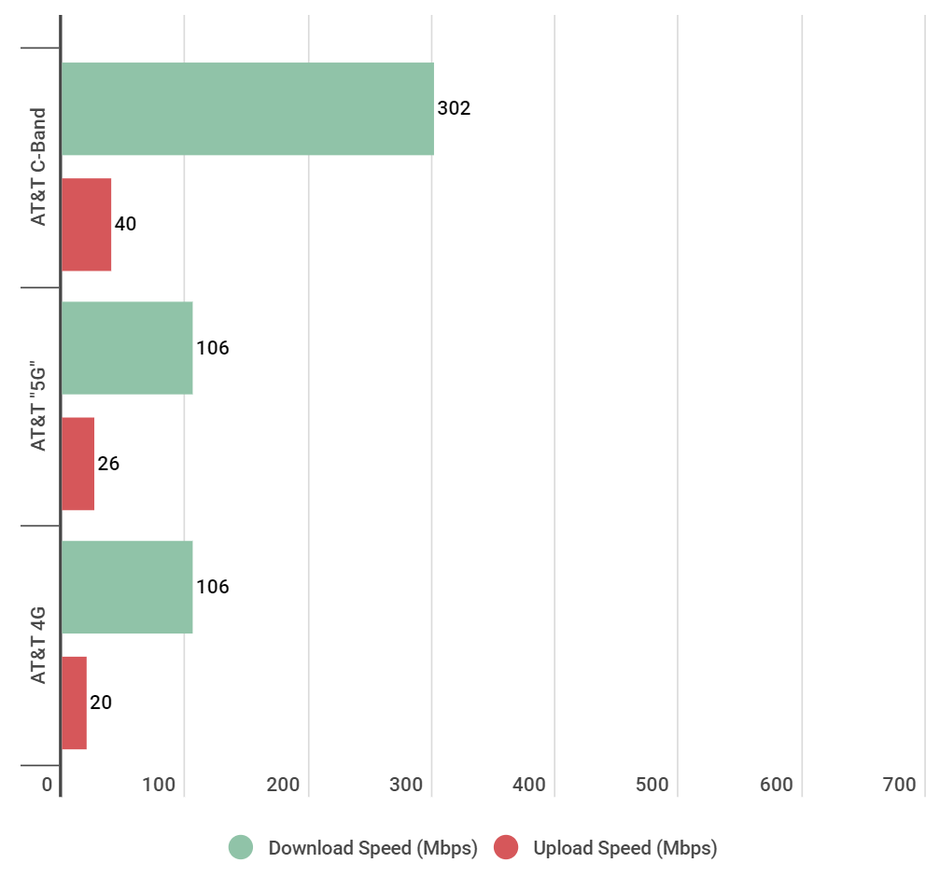We may earn a commission if you make a purchase from the links on this page.

Recently, AT&T scooped up the lion’s share of the FCC’s 5G spectrum auction in the C-Band frequencies, on top of a $23 billion range it already amassed earlier. Verizon didn’t take part in that fall auction, but only because it already grabbed more than $45 billion worth in previous ones.
AT&T phones with C-Band 5G support on the C-Band network
- Apple iPhone 13 Pro Max
- Apple iPhone 13 Pro
- Apple iPhone 13
- Apple iPhone 13 mini
- Apple iPhone 12 Pro Max
- Apple iPhone 12 Pro
- Apple iPhone 12
- Apple iPhone 12 mini
- Samsung Galaxy S21 Ultra
- Samsung Galaxy S21+
- Samsung Galaxy S21
- Samsung Galaxy S21 FE
- Samsung Galaxy Z Fold 3
- Samsung Galaxy Z Flip 3
- Samsung Galaxy A13 5G
- Google Pixel 6
- Google Pixel 6 Pro
AT&T 5G C-Band vs 5G low-band vs 4G LTE network speed tests
- Verizon’s new coverage map says it’s blanketing more than 46 metro areas with C-band, AT&T only lists eight—and it doesn’t have maps.
- C-band offers the boost that AT&T needs. Download speeds on the C-band site were triple our average AT&T speeds in the rest of Chicago.
- Low band 5G in Chicago didn’t give us any advantage over 4G performance compared to the boosts we saw from C-band 5G.
- AT&T’s 40MHz C-band channel is twice as big as the largest possible 4G channel, so it makes a real difference in performance. In comparison, Verizon uses 60MHz C-band channels and T-Mobile uses 100MHz, non-C-band.
- AT&T is willing to let Verizon take the big C-band related headlines for now, while it plans to accelerate its buildout in the second half of 2022 and through 2023.
While the speeds tested were times above the rest of AT&T’s network in the Windy City, the C-Band 5G coverage is few and far between still. If you are lucky enough to live in the reach of one of Ma Bell’s C-Band-spreading towers, though, and happen to have one of the phones in the list above that support it, you’ll be in for a treat.
- AT&T’s low-band 5G is fast and can travel farther than AT&T’s high-band 5G+ and penetrate through buildings and objects.
- AT&T’s mid-band 5G+ (C-Band) fills the gap between the two current bands by traveling farther than high-band 5G+ and providing faster speeds than low-band.
- High-band 5G+ (mmWave) provides lightning-fast speeds, but has limited reach so is used primarily in stadiums and high-traffic areas like entertainment districts.
Moreover, AT&T’s particular low-band 5G implementation rages over a tiny 5MHz sliver of spectrum, letting much less data through compared to its Wild West of a 4G LTE coverage. The new C-Band spectrum deployment doubles even the best 4G LTE spread in its turn, which explains why it delivered the download speeds you see in the chart below.


